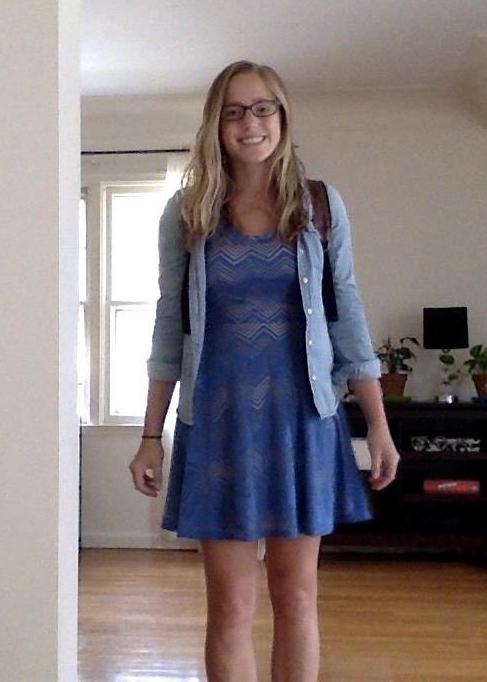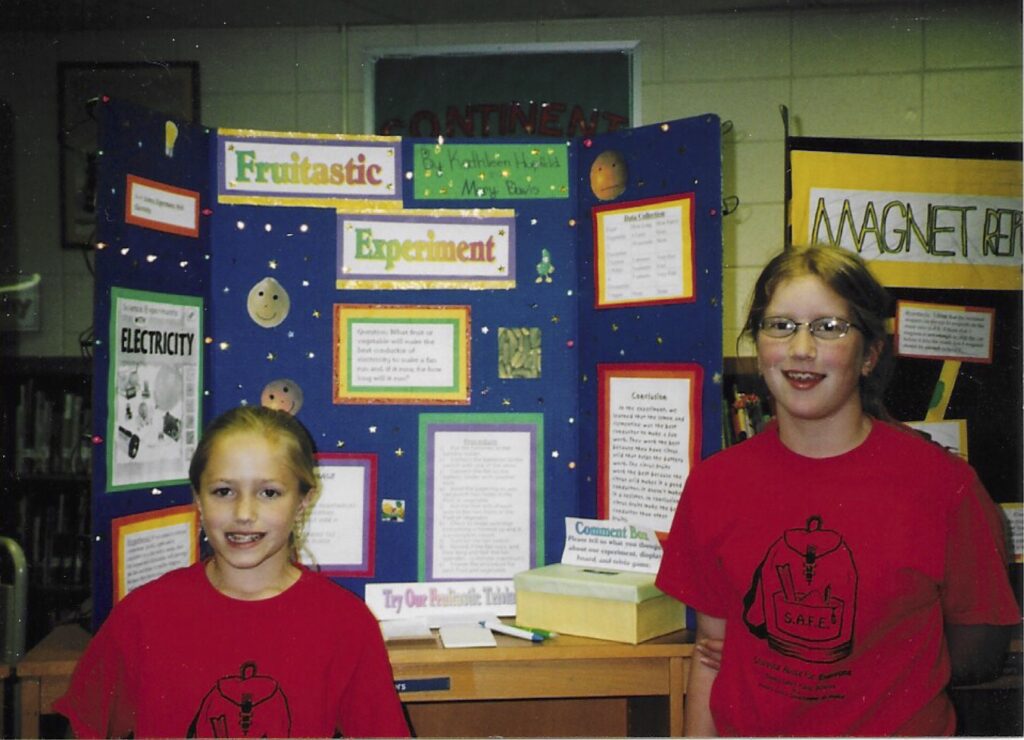I believe that excellent teaching requires highly engaged learning.
In my teaching, I aim to create safe spaces for active discussion, questions, and more questions. Scientists ask the wrong questions all of the time. Scientists answer questions incorrectly. This is part of the process. I strive to convey this to my students — that it’s fine to be wrong, it’s fine to ask the wrong questions, it’s fine to not know something. The critical piece is being engaged in the process.

“If you’re going to make a mistake, make it loud so everyone else can hear”
As my third grade orchestra teacher always said, “If you’re going to make a mistake, make it loud so everyone can hear.” I want my students to feel comfortable getting things wrong. Even if incorrect, sharing their thought process with others helps me identify where they need more instruction, and helps other students develop a deeper understanding of the material.
I use technology throughout my lectures. I use Kahoot to ask students multiple choice questions during class. Frequent low-stakes [no stakes] quizzing improves learning and helps me identify topic areas that need more attention. I have my students vote on topics to review, the format of class and class activities, and so on. I engage my students in their learning process. I do not lecture at students and hope that they retain something useful. I constantly check in with them. I strive to make class a productive use of everyone’s time.


I use hands-on demonstrations and activities whenever possible. It never gets old seeing students’ faces as they watch me “zap” a participant’s brain with transcranial magnetic stimulation (TMS) for the first time. I thrive off of this energy, and my students do as well. Science happens in the lab, not the classroom. Thus, whenever possible, I get my students into the lab — watching demonstrations, learning how to set up and collect data themselves, writing or adapting code, and analyzing data. For example, with my PhD advisor, I developed a TMS short course for grad students.
My course mirrored the general process I’d take in training a new student to run a TMS project in my lab:
- Lecture on TMS background [theory, safety, applications]
- Journal club-style discussion of TMS safety and experimental papers
- TMS demo in lab
- Small groups come to lab and run their own TMS experiments
- Groups analyze the data they collected by adapting provided MATLAB code
- Groups write a brief manuscript-style report on their findings
My goal with this course was to take students through the scientific process — from learning about a technology that was new to them, to writing up a mini-manuscript on their findings. This process included all of the frustrations of science — e.g., no one is an expert at finding TMS “motor hotspots” the first time. And, this process included the critical translation from watching a demonstration to students actually doing a procedure themselves. While not all of my former students went on to incorporate TMS into their research, I am confident that each student felt as though they received comprehensive TMS instruction — and left with a much deeper understanding of TMS than they could have received from a lecture hall.
Excellent teaching develops translatable skills.
I am part of my students’ journey to reach their next career step. I start each semester by asking my students, “What do you want to be when you grow up?” Usually, I do this via index cards they share with me privately — so that no one feels embarrassed if they do not have a good answer or align with the majority answer in the class. At the second class meeting of the semester, I share a graph categorizing students’ responses. Understanding where students are headed next is critical for shaping my course content. For instance, if my class is full of future clinicians, I include clinical examples wherever possible. I also try to infuse the importance of becoming critical readers of new science. Though, for instance, many aspiring doctors won’t go on to pursue MD-PhDs, it still remains crucial to teach our future healthcare workers how to read — and critique — newly-published manuscripts.

I aim to develop useful, translatable skills. In a psychology lecture, this might include critiquing manuscripts, analyzing behavioral data, or talking through how one might design an appropriate experiment to test a new question. In a human physiology lab, this might involve instruction on taking manual blood pressure or conducting exercise tests. In all of my undergraduate teaching, this includes a crash course in best practices for studying.
In graduate coursework, my focus is on research skills — such as learning a new data collection technique (e.g., in my TMS course), receiving introduction to coding (e.g., using MATLAB to analyze EMG data), appropriately “journal clubbing” papers, and understanding the grant writing process. In the face of an increasingly competitive job market, I aim to help all of my students develop real skills.
Excellent teaching is constantly evolving.
I am a firm believer in science. Science is constantly evolving, and therefore my teaching is also constantly evolving. I closely follow the literature on teaching best practices and adapt my approaches accordingly. I ask my students for feedback via anonymous voting and surveys. I seek formal teaching evaluation from experts housed in institutional Centers for Teaching and Learning. I recognize that what works best for one group of students may not work on the following semesters’ students, and I adapt accordingly.
I strive to make my classroom safe and inclusive. I’ve taught many students with learning differences. I spent years working with young people with various disabilities as a Special Olympics coach. I’ve spent time as a special education classroom assistant. I have background investigating interventions for young people with ADHD, and I continue to study folks with ADHD as one area of my research. Despite these experiences, I am still a work in progress. I am aware that students have hugely varying needs, and that it can be exhausting for students with special learning requirements to be asked constantly to fill out mountains of paperwork, just to receive the smallest accommodations. I convey to my students on Day 1 that my job is to support their learning. I work with students who require accommodations to adapt my teaching practices to fit their needs. I am always open to new learning on inclusivity practices, and I consistently seek out new training (e.g., seminars, articles, etc.) on these topics.
I love learning.
My other main goal in my teaching is to convey my passion for learning. I built a career around research and teaching because I love science. I love asking new questions. I love figuring out what’s still left to learn. I spent over two decades as a student, and I have yet to leave “school.” My goal is to spend my career in higher education as a lifelong learner. While textbooks can provide critical foundational knowledge, I always try to infuse new science into my lectures — to help students gain an appreciation of how quickly science continues to evolve, and how many new questions remain to be asked.


